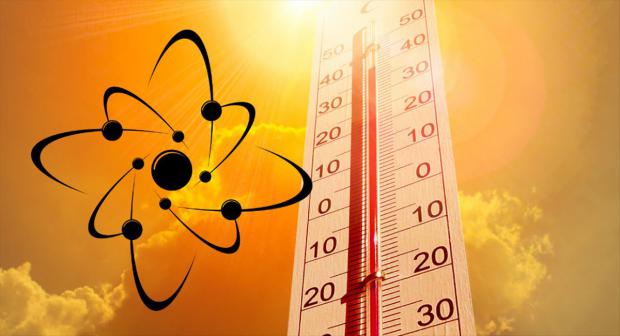
Breaking News
DRINK 1 CUP Before Bed for a Smaller Waist
 Nano-magnets may defeat bone cancer and help you heal
Nano-magnets may defeat bone cancer and help you heal
 Dan Bongino Officially Leaves FBI After One-Year Tenure, Says Time at the Bureau Was...
Dan Bongino Officially Leaves FBI After One-Year Tenure, Says Time at the Bureau Was...
 WATCH: Maduro Speaks as He's Perp Walked Through DEA Headquarters in New York
WATCH: Maduro Speaks as He's Perp Walked Through DEA Headquarters in New York
Top Tech News
 Laser weapons go mobile on US Army small vehicles
Laser weapons go mobile on US Army small vehicles
 EngineAI T800: Born to Disrupt! #EngineAI #robotics #newtechnology #newproduct
EngineAI T800: Born to Disrupt! #EngineAI #robotics #newtechnology #newproduct
 This Silicon Anode Breakthrough Could Mark A Turning Point For EV Batteries [Update]
This Silicon Anode Breakthrough Could Mark A Turning Point For EV Batteries [Update]
 Travel gadget promises to dry and iron your clothes – totally hands-free
Travel gadget promises to dry and iron your clothes – totally hands-free
 Perfect Aircrete, Kitchen Ingredients.
Perfect Aircrete, Kitchen Ingredients.
 Futuristic pixel-raising display lets you feel what's onscreen
Futuristic pixel-raising display lets you feel what's onscreen
 Cutting-Edge Facility Generates Pure Water and Hydrogen Fuel from Seawater for Mere Pennies
Cutting-Edge Facility Generates Pure Water and Hydrogen Fuel from Seawater for Mere Pennies
 This tiny dev board is packed with features for ambitious makers
This tiny dev board is packed with features for ambitious makers
 Scientists Discover Gel to Regrow Tooth Enamel
Scientists Discover Gel to Regrow Tooth Enamel
 Vitamin C and Dandelion Root Killing Cancer Cells -- as Former CDC Director Calls for COVID-19...
Vitamin C and Dandelion Root Killing Cancer Cells -- as Former CDC Director Calls for COVID-19...
Extraordinary new material shows zero heat expansion from 4 to 1,400 K

This new zero thermal expansion (ZTE) material made of scandium, aluminum, tungsten and oxygen did not change in volume at temperatures ranging from 4 to 1400 Kelvin (-269 to 1126 °C, -452 to 2059 °F).
That's a wider range of temperatures, say scientists from the University of New South Wales (UNSW), than any other material demonstrated to date, and it could make orthorhombic Sc1.5Al0.5W3O12 (catchy name, eh?) a very handy tool for anyone engineering something that needs to work in extremely varied thermal environments.
Examples of where this might come in handy include things like aerospace design, where components are exposed to extreme cold in space and extreme heat at launch or on re-entry. Famously, the SR-71 Blackbird was designed to expand so much at its Mach 3.4 top speed that it would liberally drizzle fuel on the runway at ground temperatures; the fuel tanks wouldn't even fully seal until they heated up. This new material stays exactly the same volume from close to absolute zero all the way up to comfortably over the heat you'd expect to get on the wing of a hypersonic aircraft traveling at Mach 5.
Or there's things like medical implants, where the range of expected temperatures isn't so varied but even a small amount of thermal expansion can cause critical issues.
The UNSW team made the discovery more or less by accident: "We were conducting experiments with these materials in association with our batteries-based research, for unrelated purposes, and fortuitously came across this singular property of this particular composition," says Associate Professor Neeraj Sharma.



